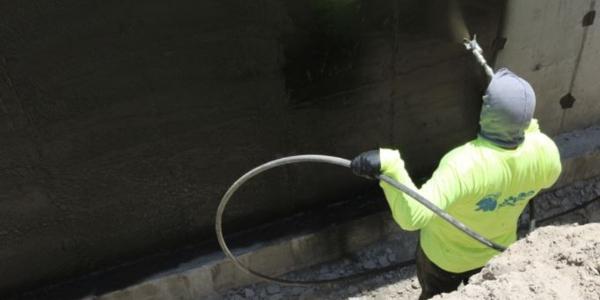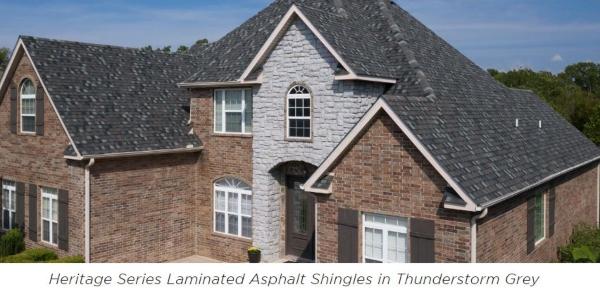Advantages of Using Cool Roof Coatings

By Polyglass.
Get the most out of solar resistance in roofing systems with cool elastomeric roof coatings.
When the sun’s glare strikes a roof, it can lead to problems such as excessive heat and higher energy bills. Modern cool roofs can prevent these issues, but older roofs cannot stop them as easily. Luckily, applying a cool roof coating can do the trick.
“Cool” elastomeric roof coatings allow contractors to maximize the solar resistance of a roofing system, as well as protect older roofs from ultraviolet rays.
This article will first explain what cool roofs are before diving into cool roof coatings and their benefits. It will also look at Polyglass’ line of innovative elastomeric roof coatings, including real-world case study examples demonstrating their efficacy.
What is a cool roof?
A cool roof system is a type of roof designed to reflect the sun’s energy to prevent it from heating a building excessively. When heat from the sun warms the interior of a building, air conditioning systems have to work harder to compensate. If too much heat escapes from a building through the roof, the heating system expends more energy to keep the interior warm. These problems can lead to a lot of wasted energy and higher bills.
Cool roofs are designed for optimal reflectivity. A cool roof system is designed to negate these issues while keeping the inside of the building cool and comfortable during the hottest months of the year.
The technology behind cool roofs has been around for thousands of years and can be traced as far back as ancient Mediterranean societies, which constructed white-washed buildings to stave off the heat. Typically, cool roofs take the form of either roofing membranes or roof coatings that are white or lightly colored.
What makes a roof “cool”?
Categorizing a roofing system as a cool roof is performed by various organizations and rating systems, such as the Cool Roof Rating Council (CRRC) or the Solar Reflective Index (SRI) value of the roof.
Founded in 1998, the CRRC tests a wide array of roofing products such as membranes and coatings. They analyze how much solar energy a product reflects and how much thermal energy it emits to indicate its effectiveness. The closer these ratings are to 1, the better the product’s score.
SRI is a metric that tells you how much ultraviolet radiation a roof can reflect. A higher SRI score of between 70 or higher means that a roof can repel more solar energy, allowing the roof to maintain a cooler overall temperature.
Standard dark-colored roofs have low SRI scores of 20 or under, meaning they reach much higher temperatures when exposed to direct sunlight. Conventional roofs without cooling technology can experience temperatures up to 100°F higher than the actual ambient temperature.
Is a cool roof worth it?
Although most commercial and service buildings can benefit from installing a cool roof, clients in some areas of the country will benefit more than others. It’s worth keeping this in mind when advising clients about energy-saving systems and determining if this kind of roof is right for them.
Across the board, installing a cool roof will usually incur what is known as a “winter heating penalty.” This is where the roof’s cooling properties cause a slight increase in winter heating bills for most buildings, as the heating system must compensate for the cooling effects.
However, the tremendous savings during the summer will outweigh the winter penalty in most cases. But again, the benefits are not equal for buildings located in different areas of the country.
Buildings in hotter parts of the US, such as Climate Zone 1 and 2 areas like California, Florida and Texas, will see greater benefits from a cool roof system across the year. These roofs should also be considered by regions that fall within Zone 3 and 4, as these areas can still get plenty of benefits from a cool roof system in terms of saving energy and money.
What is a cool roof coating?
Cool roof coatings consist of a formulation designed to be brushed or painted onto an existing roof surface to increase its solar resistance and reflectivity. These are typically made from materials such as acrylic or silicone and can be applied to many different types of roof surfaces quickly and easily.
Cool roof coatings are usually elastomeric, which means that they are formulated with different polymers to create a flexible product. These coatings can react to rapidly changing temperatures on a roof.
Why is this important?
As roof surfaces heat up and cool down, they expand and contract slightly. This is a slow process on a normal day as temperatures fluctuate during the day and into the night. In some circumstances, however – such as on a hot day, when it suddenly rains – the surface temperature can quickly decrease, resulting in a rapid contraction of the roof surface. This rapid cooldown is known as thermal shock and can be detrimental to a roof, especially one made of metal and connected with screws and other penetrations.
Different materials expand and contract at different rates. A coated roof will typically stay within 15 degrees Fahrenheit of the ambient temperature, limiting thermal shock.
White coatings versus white paint
There are also paint-based cool roof products on the market, which involve mixing ceramic or concrete material types with white or lightly colored acrylic paint. While these products may seem similar to elastomeric coatings, there is a key difference between them. Paint-based products are typically inflexible and cannot react to higher temperatures on a roof. This makes them much less effective and less durable than white elastomeric coatings.
The benefits of cool roof coatings
There are several benefits that cool elastomeric roof coatings can bring to your clients. Let’s take a look at some of these benefits to help you decide whether these coatings are right for your next project:
1 - Cost-effective
Cool roof coatings are much cheaper than completely replacing a roof with new membranes. An elastomeric coating can add several years to a roof’s lifespan and reduce labor and material costs.
2 - Ease of installation
One of the biggest advantages of coatings is their ease of application. Most cool roof coating types can be applied using a brush, roll or spray-on method. This allows for a quick installation and is also much safer than other roofing methods. Many of these products are also water-based, which vastly reduces the amount of potentially toxic fumes that can be potentially released during installation.
3 - Good for the environment
By improving the solar reflectivity and thermal regulation of a roof, cool roof coatings can reduce the need for energy to power the air conditioning and heating systems. This reduces the reliance on fossil fuels and power plants, cutting down the number of greenhouse gases released into the atmosphere.
4 - Improved energy efficiency
Elastomeric coatings can also help reduce energy bills by increasing the energy efficiency of a building. The more sunlight that penetrates the roof, the warmer the building becomes inside. This means that air conditioning systems spend more energy trying to keep the building cool and comfortable. With a cool roof, there is less heat penetration, and the building uses less energy. Savings have much more impact in hotter areas of the country.
5 - Increased solar reflectivity
Applying a cool roof coating helps a roof to reflect incoming ultraviolet rays from the sun better. Elastomeric coatings are white or lightly colored, making them much more effective at dispelling solar energy than dark-colored roofs.
6 - Versatility
Because of their liquid formulation and ease of application, coatings are versatile enough to work with many different roofing materials such as metal, concrete, foam and wood. Cool roof coatings can also be used when membranes are unsuitable, such as steep-sloped metal roofs.
Polyglass’ Kool Roof Solutions
As one of the world’s leading roofing manufacturers, we at Polyglass bring over 50 years of expert knowledge and pioneering innovation to our Kool Roof Solutions.
This specialized line of roofing products includes both modified bitumen roofing membranes, which feature Polyglass’ patented CURE Technology, and elastomeric roof coatings designed for a wide variety of applications. Polyglass products that feature CURE Technology are ENERGY STAR® Certified and score high marks for energy efficiency. Here’s a quick spotlight on some of our white elastomeric coatings:
PG 700
Polyglass’ water-based elastomeric PG 700 coating provides a complete reflective layer to a roofing system. This product can be applied to several roofing materials, including modified bitumen roofing membranes and metal surfaces. PG 700 boasts initial CRRC scores of 0.87 for solar reflectance and 0.90 for thermal emittance.
PolyBrite 70
PolyBrite 70 is an acrylic elastomeric coating that provides a durable and highly reflective layer to most roofing surfaces. It can be used on most roofing surfaces and scores 0.87 for solar reflectance and 0.90 for thermal emittance under the CRRC rating system.
PolyBrite 90
Polyglass’ PolyBrite 90 roof coating is a high solid silicone formula that provides outstanding solar reflectivity and waterproof protection while increasing a roof’s lifespan. PolyBrite 90 has a solar reflectance CRRC score of 0.87 and a thermal emittance score of 0.89.
Cool roof coating case studies
Polyglass’ Kool Roof Solutions roof coatings have been successfully applied in several recent projects for our valued contractors. These examples will give you a better idea of how Kool Roof coatings could benefit your next client:
ICU Medical
Medical supply company, ICU Medical, required restoration of their Sante Fe Springs distribution center, a project covering 80,000 square feet. Contractor C.I. Services Inc was drafted in to help. Upon initial evaluation, C.I. Services discovered that two types of roofing materials covered the distribution center.
To protect both materials from the relentless California sun, C.I. Services turned to Polyglass’ PolyBrite series. First, a layer of PolyBrite 98 water-based primer was applied to help a silicone coating bond with the different surfaces.
For the coating itself, C.I. Services chose PolyBrite 90.1, a durable and versatile silicone coating that boasts a highly reflective finish and strong UV resistance to perfectly meet the client’s needs.
Lereta Headquarters
Lereta LLC is a flood services and property tax company based in Pomona, California. Lereta required their company headquarters roof to be restored, so they turned to C.I. Services.
Lereta’s old roof was showing signs of wear and tear across its 500-square-foot PVC surface. To help the roof stand up to the heat of the California sun, C.I. Services decided to use a two-part PolyBrite solution for the job.
After pressure-washing the roof, a PolyBrite single-ply primer was used to create a good foundation for the coating. PolyBrite 90.1 was then used as the top layer, providing unrivaled UV protection and solar reflectivity to protect Lereta’s roof for years to come.
Learn more about Polyglass in their RoofersCoffeeShop® Directory or visit www.polyglass.com.
Original article source: Polyglass






















Comments
Leave a Reply
Have an account? Login to leave a comment!
Sign In